A New Way Forward for Dance Writing
- Winifred Haun
- Mar 29, 2021
- 3 min read

Like the rest of the world, the dance community has seen a great deal of change over the past year. There is no doubt the art form will continue to evolve, even as we eventually return to performing and enjoying the arts in person again.
The eventual re-opening of dance studios and performance venues provides a great opportunity to revisit the connection dance performers, directors and producers have with their audiences. It’s also an important moment in the dance community’s relationship with the dance writers who help shape the public’s appreciation of the art form, just as journalists and critics do with other forms of art.
Part of what makes any piece of art transcendent for its audience is that it requires risk from all those involved. In the best moments, such vulnerabilities are what develop a true connection with the audience. Exposing ourselves as artists means taking those risks and knowing that not every production will speak to every audience member, including professionals whose job is to write about dance.
Too often, the rewards of these risks are overlooked or downplayed instead of being celebrated by those who have an appreciation of the form but may find it easier to express negativity or showcase flaws that may be minor in the context of the full production, giving equal weight to a flawless performance from a lead dancer and one costume choice they didn’t like. The lack of context can be an injustice to the readers and arts lovers.
That is not to say every review should be entirely positive, and no artist expects a journalist to fall in love with every aspect of every performance or event. However, there are pieces of information even a critical review should include. Along with a description of what a writer sees at the event – including the style, movement and emotions – it is important to provide context about the artist(s) behind the work.
What is their experience in making a dance or creating a dance event? What other works have they created in the past? Is this a new form for the artist? Is the work created by someone in a marginalized community, and, if so, how might that have influenced the performance? What innovations did they take to make the work accessible to their audience, especially if the artist and audience are not physically together in one space. When possible, it is helpful to guide readers to information about everyone involved in a production and to list all or most of the performers’ names.
Of course, it remains important for the writer – or any audience member – to share what components they found most successful and share suggestions to help the production and the art form to grow.
Our community gains value from the fact that there are so many great dance critics who truly understand and appreciate the art form. We love that they dedicate their time and energy to highlighting such a special art form in a way that other art lovers and the public at large can better appreciate individual performances and dance in general.
None of us knows exactly what lies ahead for the world of dance in Chicago and elsewhere, but I hope we can all recognize that this is a great opportunity for unity among those of us who care about dance and want to see it thrive as an expression of humanity at such a critical time in people’s lives.
.png)
Comments